Topic 2 - Cells (Biology)
1/71
Earn XP
Description and Tags
Name | Mastery | Learn | Test | Matching | Spaced |
|---|
No study sessions yet.
72 Terms
What are the distinguishing features of eukaryotic cells?

Describe the general structure of eukaryotic cells
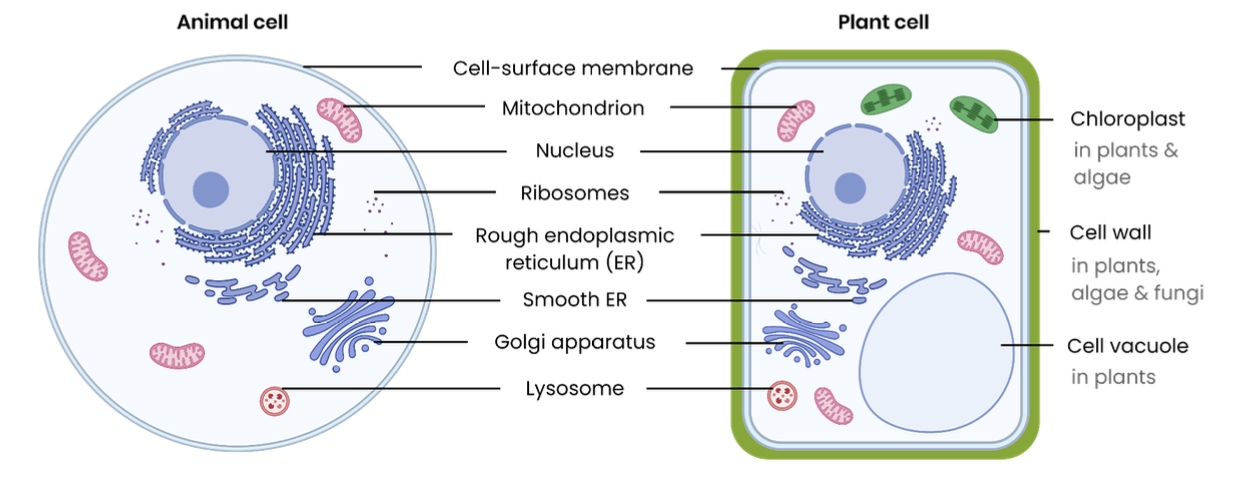
Describe the structure of the cell-surface membrane

Describe the structure of the nucleus
Describe the function of the nucleus

Describe the structure of a ribosome
Describe the structure of a ribosome
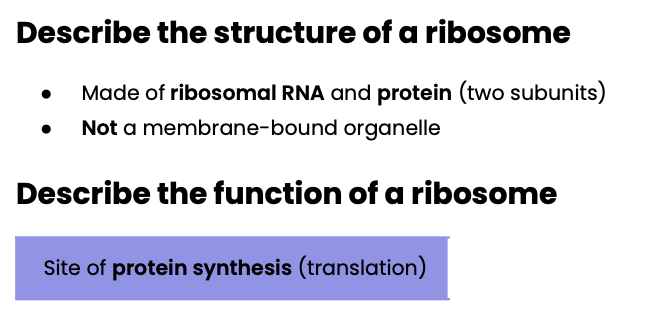
Describe the structure of rough (rER) & smooth endoplasmic reticulum (sER)
Describe the function of rER and sER
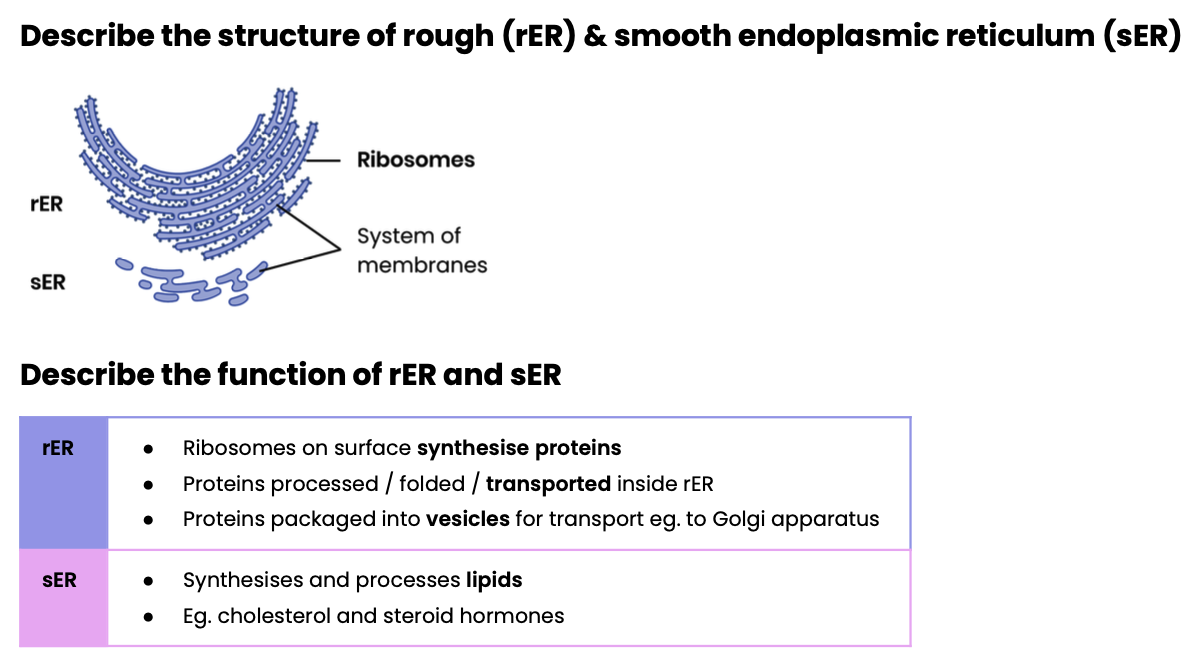
Describe the structure of Golgi apparatus and Golgi vesicles
Describe the function of Golgi apparatus and Golgi vesicles
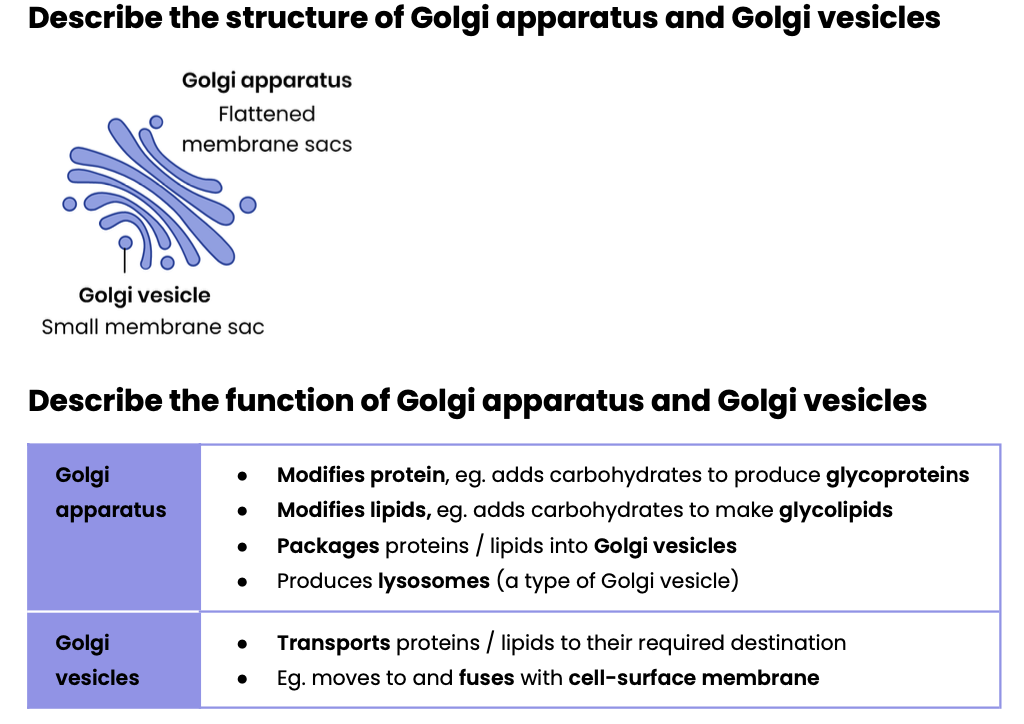
Describe the structure of lysosomes
Describe the function of lysosomes
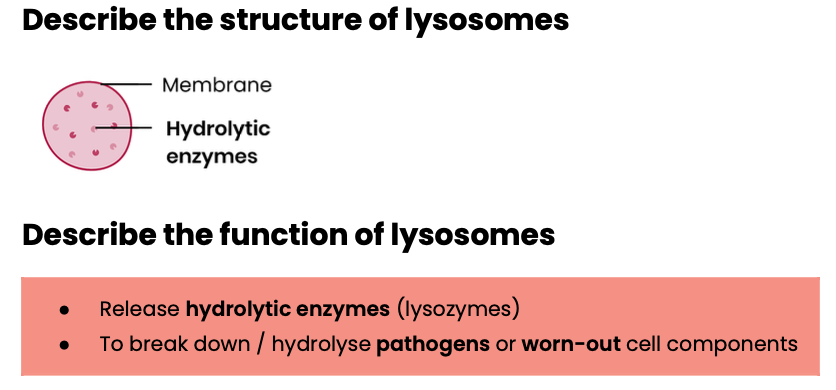
Describe the structure of mitochondria
Describe the function of mitochondria
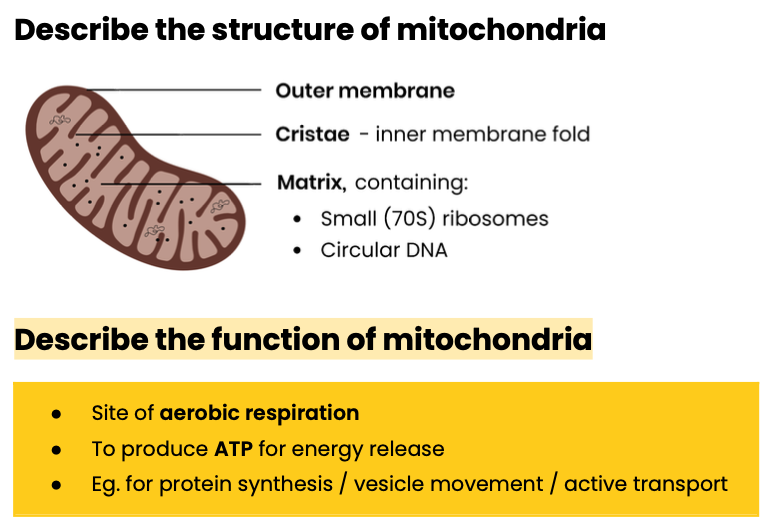
Describe the structure of chloroplasts in plants and algae
Describe the function of chloroplasts in plants and algae
Describe the structure of the cell wall in plants, algae and fungi
Describe the function of the cell wall in plants, algae and fungi
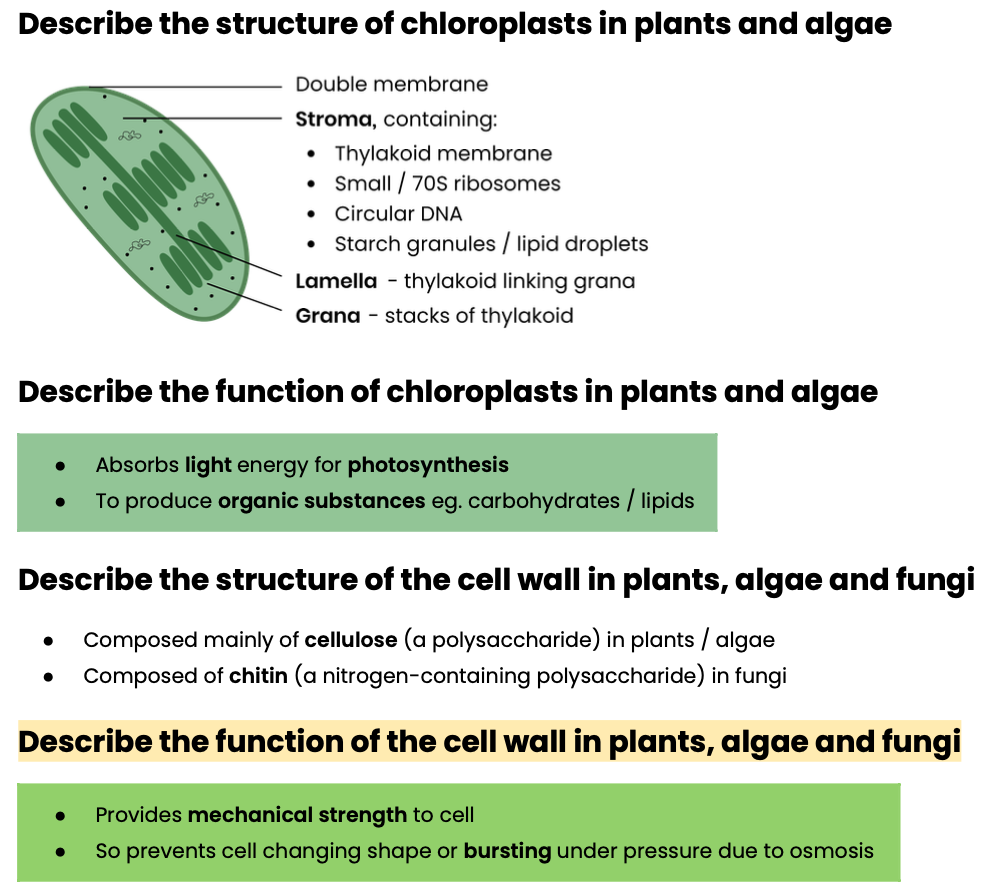
Describe the structure of the cell vacuole in plants
Describe the function of the cell vacuole in plants
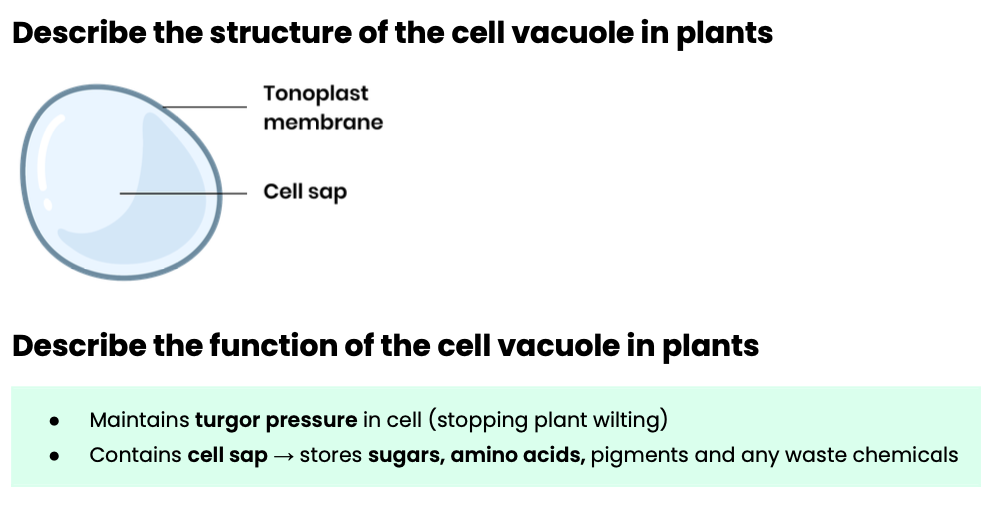
Describe how eukaryotic cells are organised in complex multicellular organisms
In complex multicellular organisms, eukaryotic cells become specialised for specific functions
What are the distinguishing features of prokaryotic cells?

Describe the general structure of prokaryotic cells

Compare and contrast the structure of eukaryotic and prokaryotic cells

Explain why viruses are described as acellular and non-living

Describe the general structure of a virus particle

Describe the difference between magnification and resolution

Compare the principles and limitations of optical microscopes, transmission electron microscopes (TEM) and scanning electron microscopes (SEM)
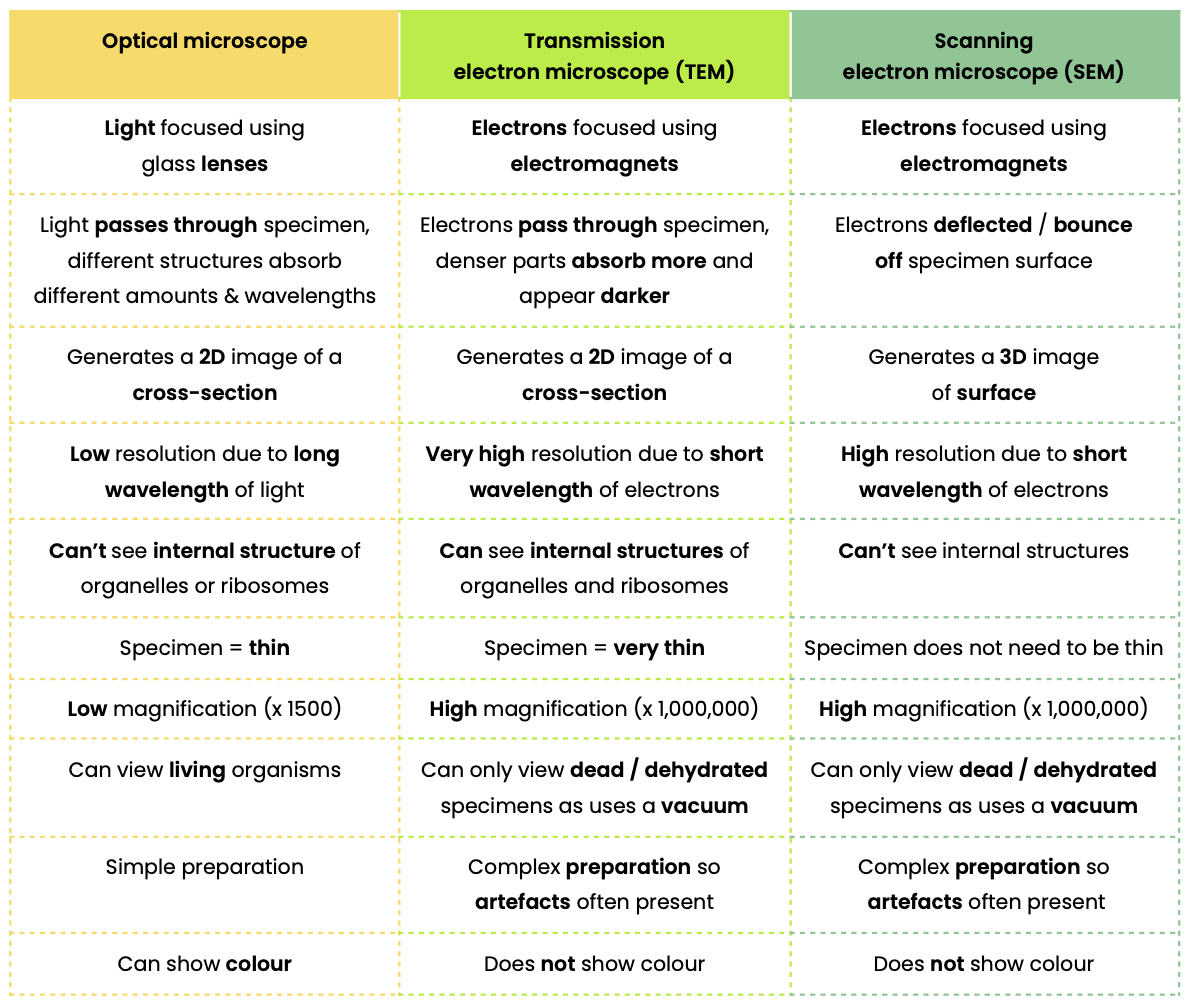
List the steps in calculations involving magnification, real size & image size

Describe how to convert between different units

Describe how the size of an object viewed with an optical microscope can be measured

Describe and explain the principles of cell fractionation and ultracentrifugation as used to separate cell components
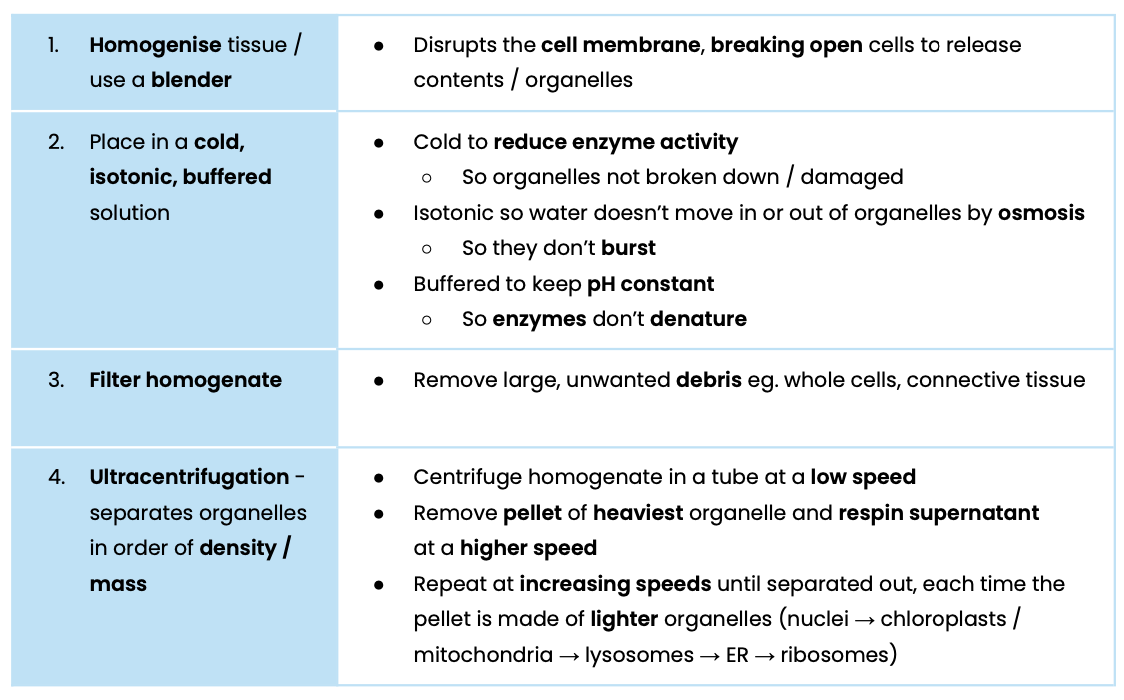
Summarise the stages of the cell cycle in eukaryotic cells

Describe the behaviour of chromosomes & role of spindle fibres in mitosis

Why do some eukaryotic cells not undergo the cell cycle?

Explain the importance of mitosis in the life of an organism

Describe how tumours and cancers form

Suggest how cancer treatments control rate of cell division

Describe how prokaryotic cells replicate

Describe how viruses replicate
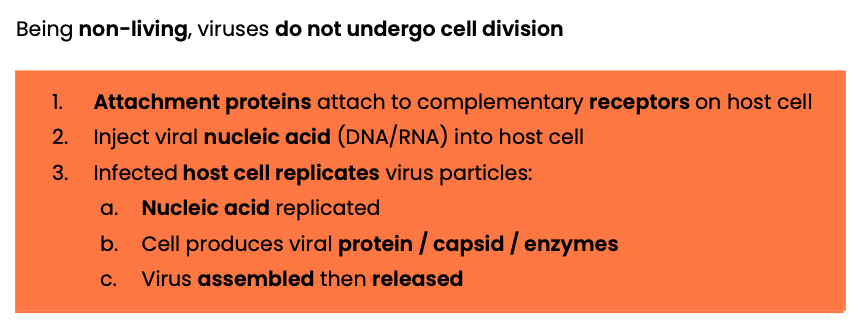
Describe the fluid-mosaic model of membrane structure

Describe the arrangement of the components of a cell membrane

Explain the arrangement of phospholipids in a cell membrane

Explain the role of cholesterol (sometimes present) in cell membranes

Suggest how cell membranes are adapted for other functions

Describe how movement across membranes occurs by simple diffusion

Explain the limitations imposed by the nature of the phospholipid bilayer

Describe how movement across membranes occurs by facilitated diffusion

Explain the role of carrier and channel proteins in facilitated diffusion

Describe how movement across membranes occurs by osmosis

Describe how movement across membranes occurs by active transport

Describe the role of carrier proteins and the importance of the hydrolysis of ATP in active transport

Describe how movement across membranes occurs by co-transport

Describe an example that illustrates co-transport
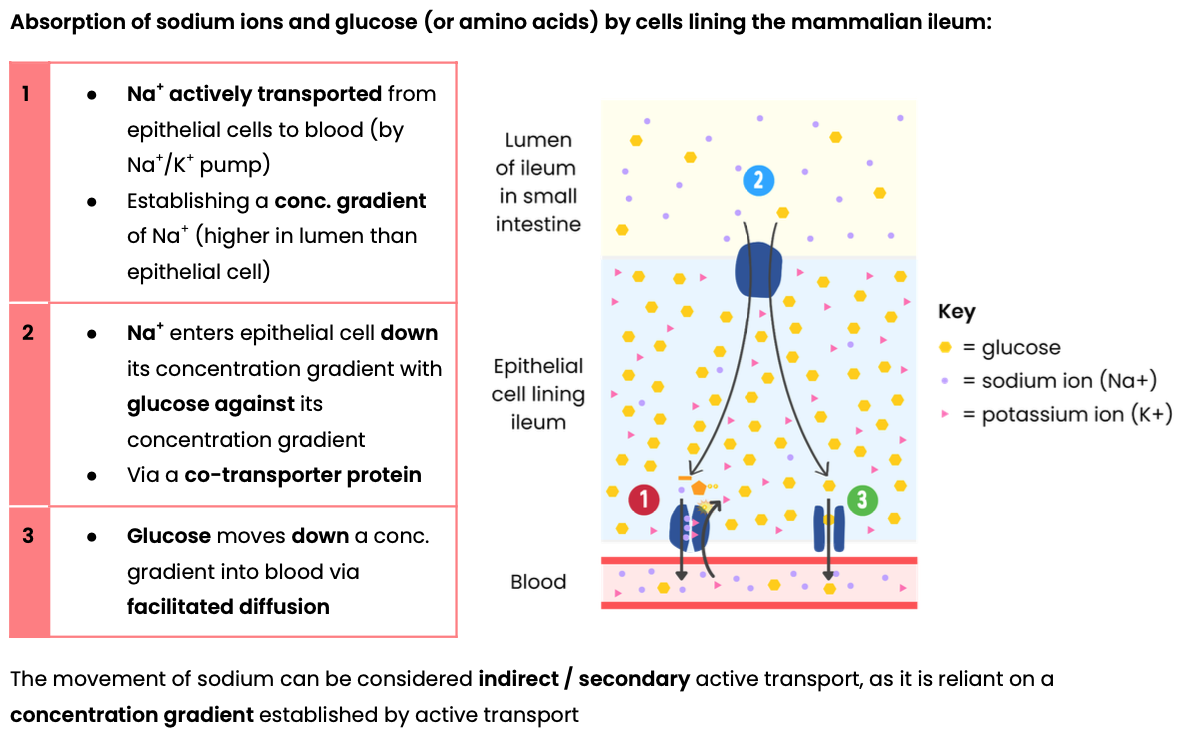
Describe how surface area, number of channel or carrier proteins and differences in gradients of concentration or water potential affect the rate of movement across cell membranes

Explain the adaptations of some specialised cells in relation to the rate of transport across their internal and external membranes

What is an antigen?

How are cells identified by the immune system?

What types of cells and molecules can the immune system identify?

Describe phagocytosis of pathogens (non-specific immune response)
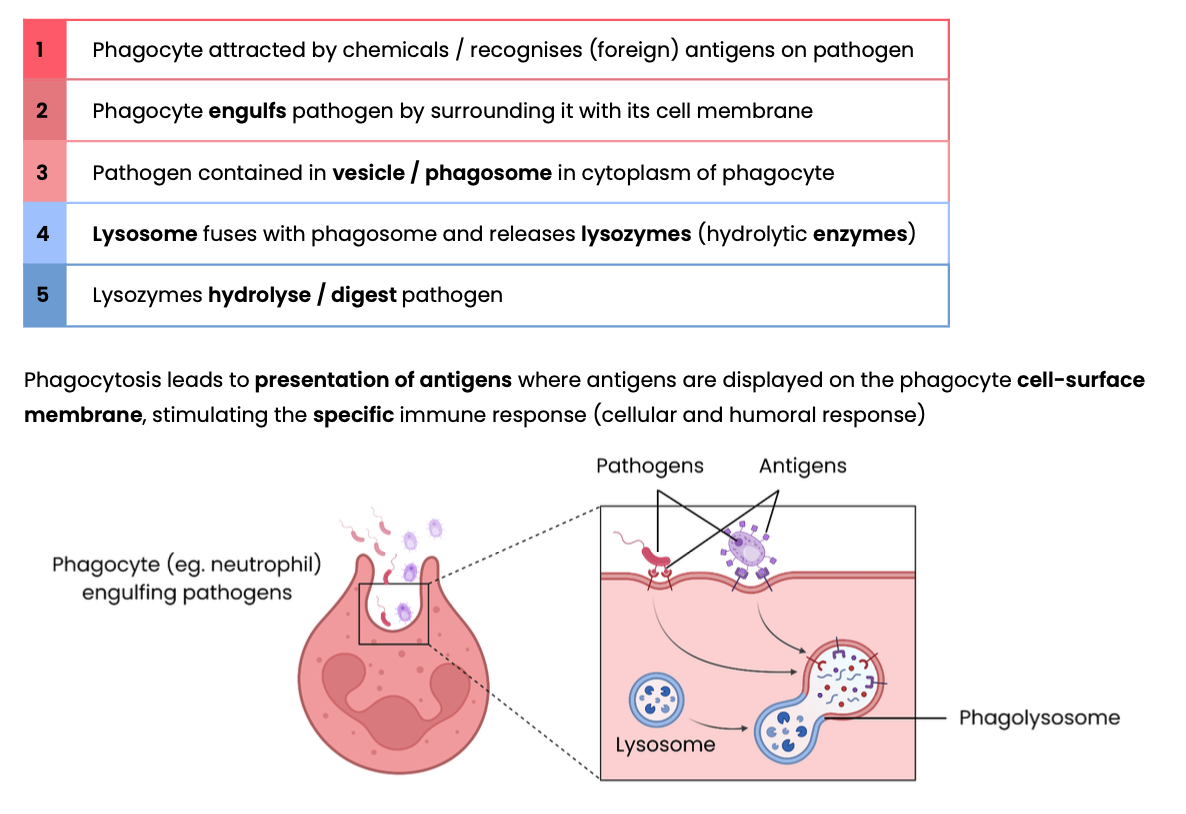
Describe the response of T lymphocytes to a foreign antigen (the cellular response)
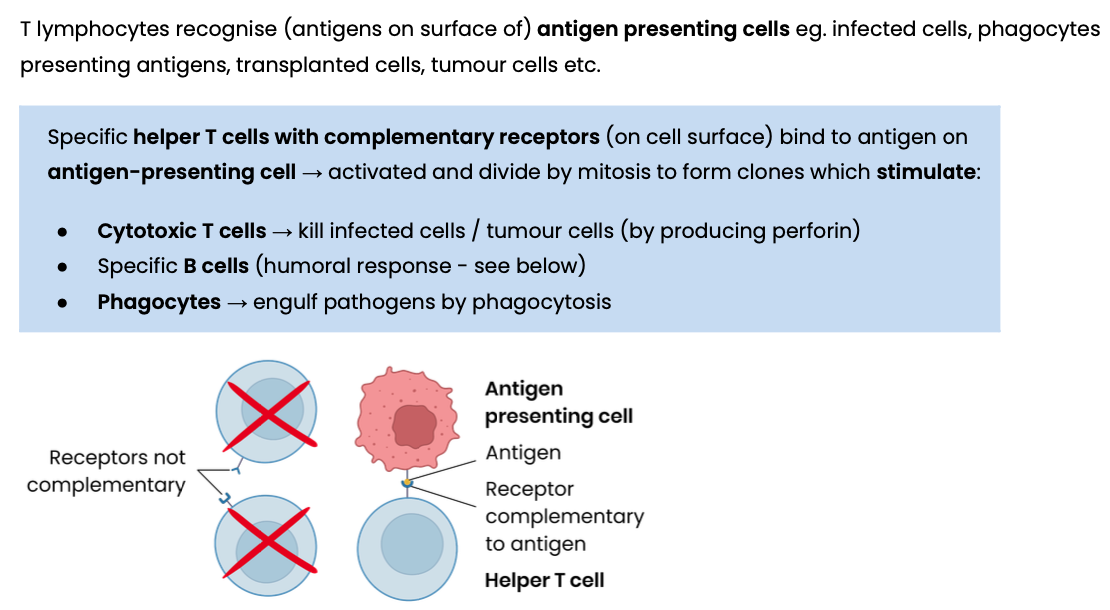
Describe the response of B lymphocytes to a foreign antigen (the humoral response)

What are antibodies?
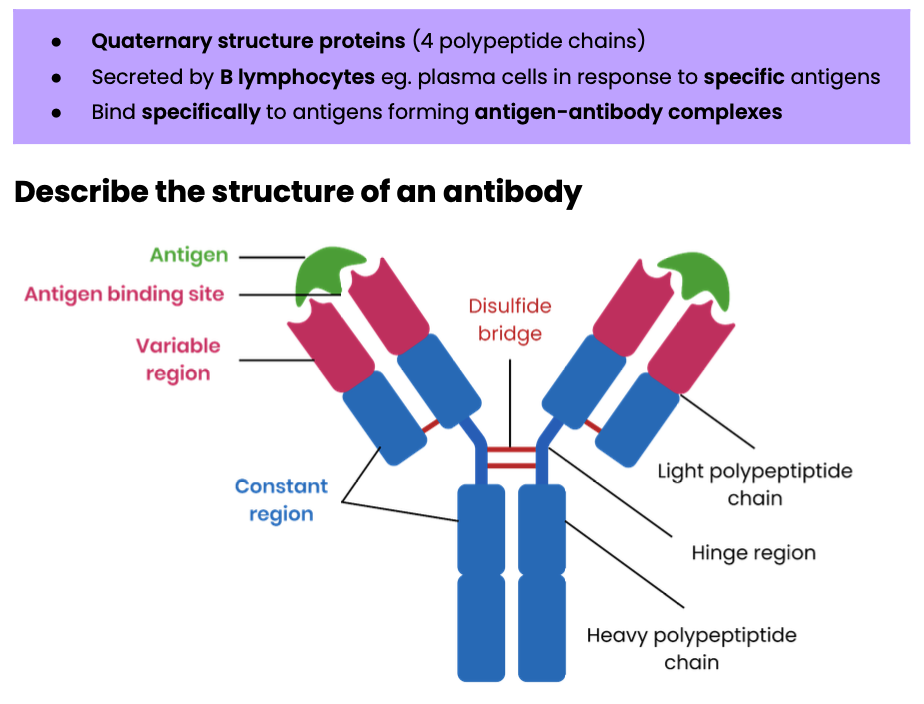
Explain how antibodies lead to the destruction of pathogens

Explain the differences between the primary & secondary immune response
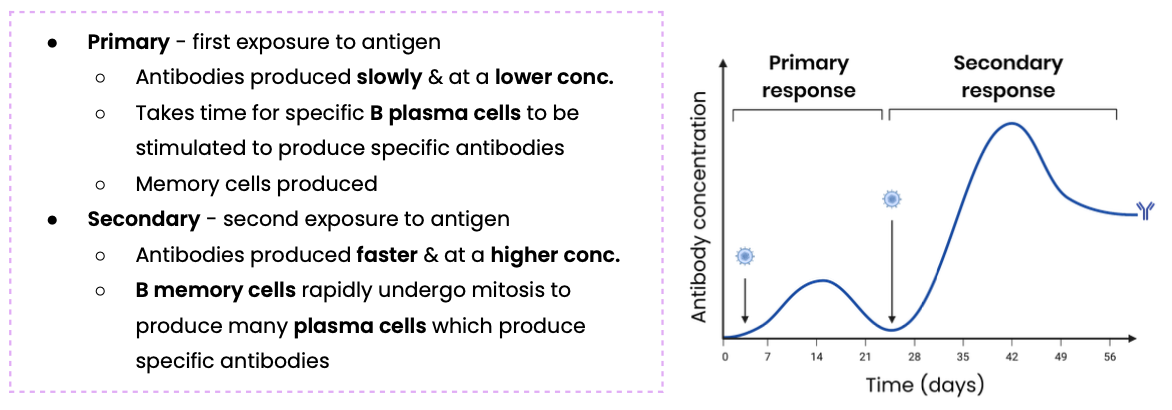
What is a vaccine?

Explain how vaccines provide protection to individuals against disease

Explain how vaccines provide protections for populations against disease

Describe the differences between active and passive immunity
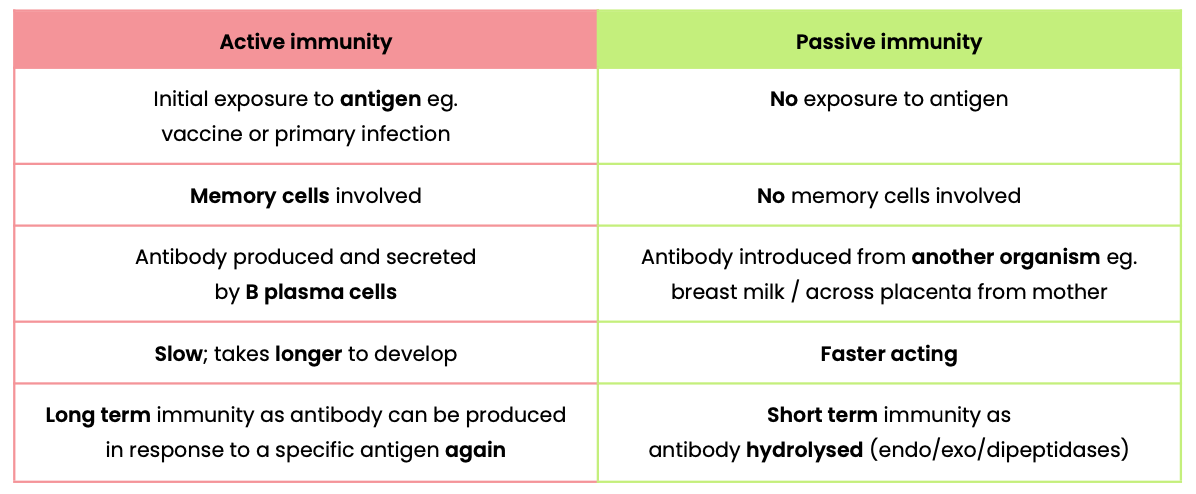
Explain the effect of antigen variability on disease and disease prevention

Describe the structure of a HIV particle
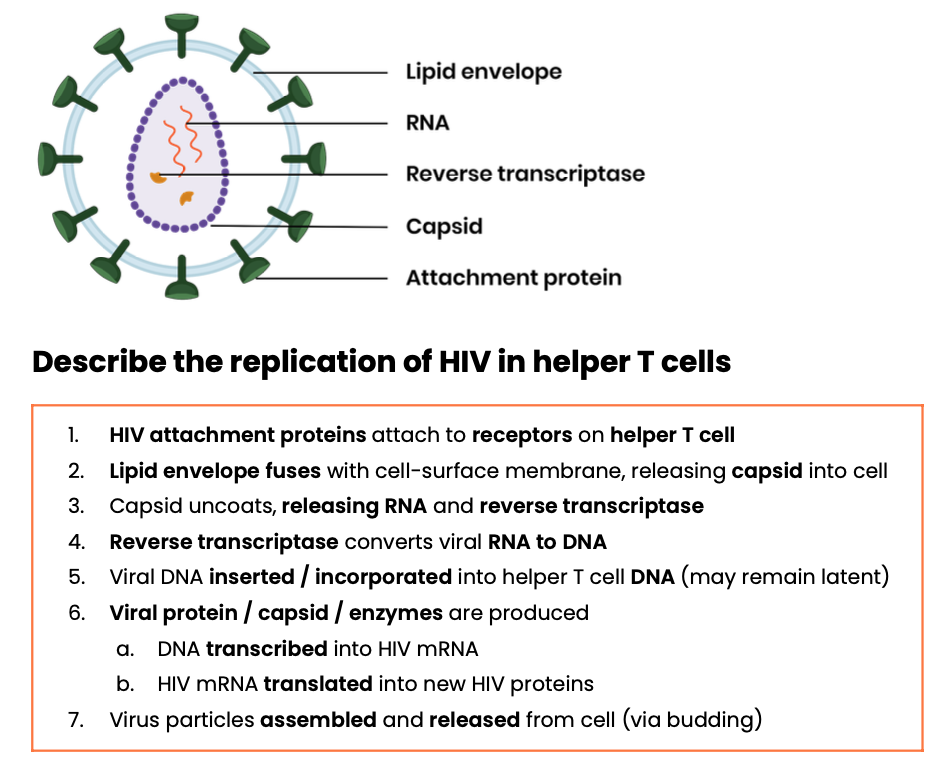
Describe the replication of HIV in helper T cells
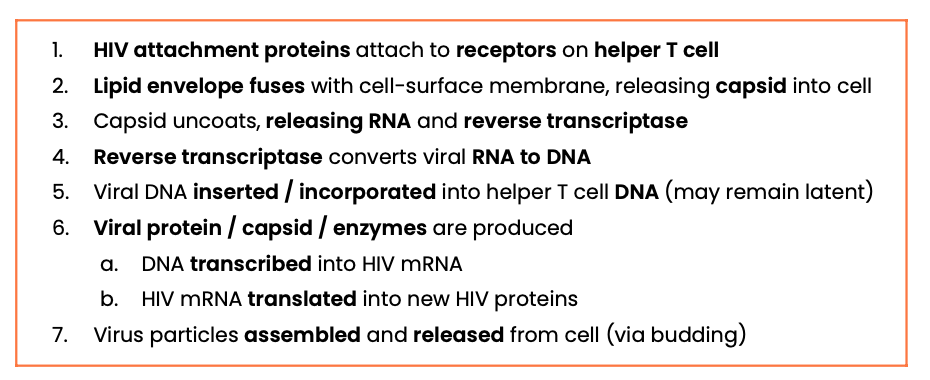
Explain how HIV causes the symptoms of acquired immune deficiency syndrome (AIDS)

Explain why antibiotics are ineffective against viruses

What is a monoclonal antibody?

Explain how monoclonal antibodies can be used in medical treatments
Some monoclonal antibodies are also designed to block antigens / receptors on cells

Explain how monoclonal antibodies can be used in medical diagnosis

Explain the use of antibodies in the ELISA (enzyme-linked immunosorbent assay) test to detect antigens
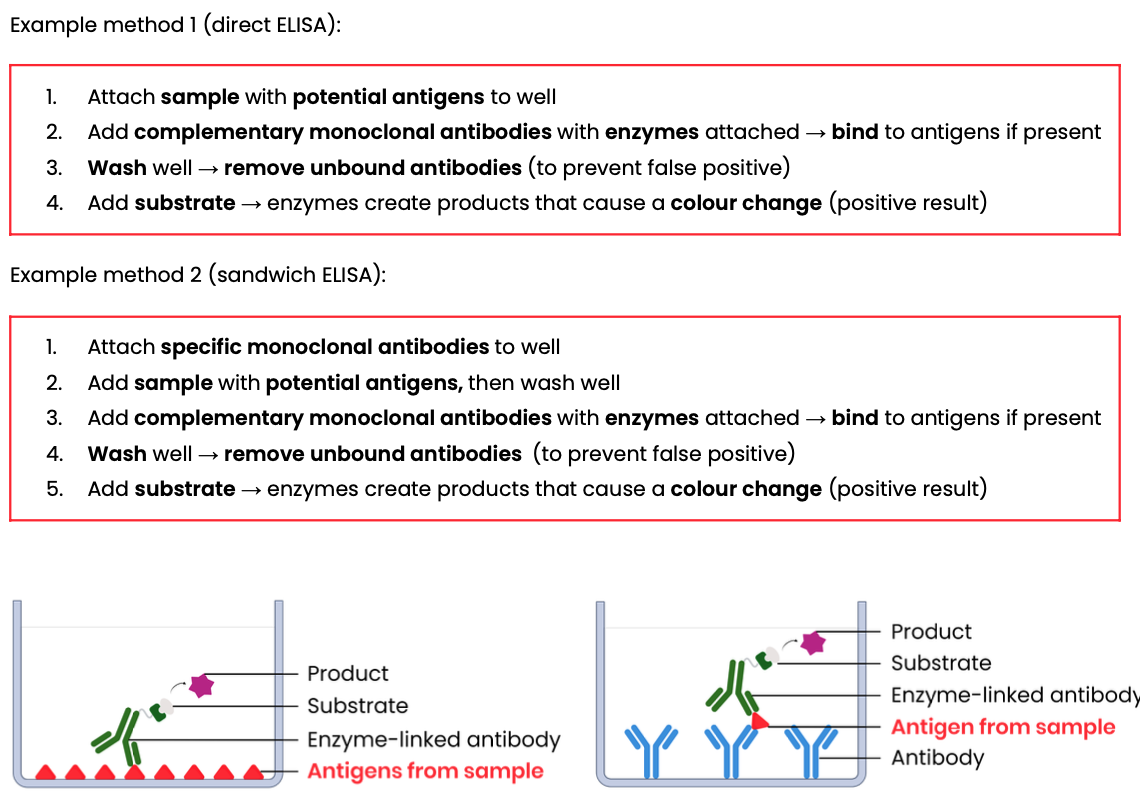
Explain the use of antibodies in the ELISA test to detect antibodies

Suggest the purpose of a control well in the ELISA test

Suggest why failure to thoroughly wash the well can result in a false positive in the ELISA test
